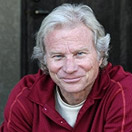

The Table of nations gives no hint of any Negroid or Mongoloid peoples . . . Suffice it is to say that the effort to derive the races of the entire world from Noah's sons of the Table of Nations is not necessary from a Biblical standpoint (Bernard Ramm, The Christian View of Science and the Scripture, Grand Rapids, MI: Eerdmans, 1954, pp. 336,337).
Since the tenth chapter of Genesis doesn't claim to speak of races at all but rather of nations, families, and languages, it would seem rash indeed to insist that the ancestors of the Negroid and Mongoloid peoples are not included in this chapter (John Whitcomb and Henry Morris, The Genesis Flood, Presbyterian and Reformed Publishing Company, 1961, p. 45).
did not spare the ancient world, but saved Noah, one of eight people, a preacher of righteousness, bringing in the flood on the world of the ungodly (2 Peter 2:5).
We need not adopt the view that has sometimes been expressed that the three sons were black, yellow, and white. If they were so what were their wives? Rather we would say that in these six people were all the genes which have separated out into the modern races . . . Shem may have had the genes for kinky hair and yellow skin, Ham for white skin and Mongoloid eyes, etc. But the genes we would have to say were all there whether in evidence in the body characteristics or not (R. Laird Harris, Racial Dispersion, Journal of the American Scientific Affiliation, Vol. 7, No. 3 Sept. 1955, p. 52).
1. Natural selection This well-established phenomenon is not a mechanism for macroevolution, as a century of experimentation has shown, although it is an important mechanism for microevolution. . . . Nature selection filters out certain parental genes in successive generations, producing offspring with slightly different characteristics and less genetic variability. For example, a fair-skinned person living near the equator is susceptible to several health risks, such as skin cancer. Consequently the fair-skinned person has slightly less chance of living to reproductive age and passing on his or her genes for light skin color to a child. A similar situation exists for dark-skinned people living in the polar latitudes. Their dark skin screens out sunlight and tends to deprive them of vitamin D, which forms in skin exposed to sunlight. Absence of vitamin D, produces rickets. Therefore, over many generations, dark-skinned people tend to live near the equator and light-skinned people tend to live at the higher latitudes.
There are exceptions to this tendency. For example, the Eskimos have rather dark skin and yet live in artic latitudes. Their diet, which includes fish-live oils containing large amounts of vitamin D, prevents rickets.
2. Cultural Preference This takes the form of likes (as in mate selection) or dislikes (as in predjudices).
Likes. The old saying that beauty lies in the eyes of the beholder probably plays a major role in explaining the so-called racial characteristics In other words, a person's cultural upbringing appears to influence mate selection among "racial" lines.
. .
Humans also have prejudices - some people more than others. Prejudices based upon physical appearances have led to wars, genocide, forced segregation, and voluntary isolation. . .
3. Small isolated populations A population of people (or any other form of life) has a large set of genetic characteristics. If a few members of this population move to an isolated region, such as an island, they will in general have a different and smaller set of genetic characteristics than the entire population. As a result, subsequent generations on that island will have different traits than the original population.
. .
There are at least four genes that determine skin color, not just one. Nevertheless there are thousands of traits each of which might cluster in an isolated geographic region if small groups broke off from the larger population. Thus specific characteristics can easily arise as they did when the eight survivors of the flood and their descendants eventually responded to God's command to spread out and repopulate the earth. From the listing of the descendants of Noah given in Genesis 10-11, we can see how the early migration patterns began. Shem's immediate descendants stayed generally near Ararat (which is in eastern Turkey) or migrated eastward. Ham's descendants migrated southward, while Japheth's descendants migrated northward. Undoubtedly, there were many other occasions where small groups colonized isolated regions and thus allowed their unique genetic characteristics to be expressed in subsequent generations (Walter Brown, In The Beginning, Phoenix, Arizona, Center for Scientific Creation, Fifth Edition, 1989, pp. 84-86).
The Blue Letter Bible ministry and the BLB Institute hold to the historical, conservative Christian faith, which includes a firm belief in the inerrancy of Scripture. Since the text and audio content provided by BLB represent a range of evangelical traditions, all of the ideas and principles conveyed in the resource materials are not necessarily affirmed, in total, by this ministry.
Loading
Loading
| Interlinear |
| Bibles |
| Cross-Refs |
| Commentaries |
| Dictionaries |
| Miscellaneous |
